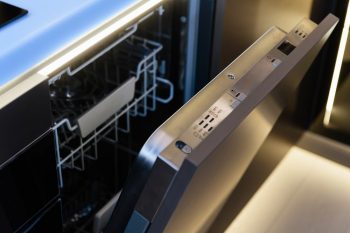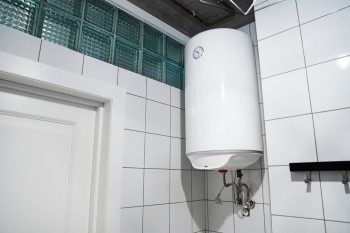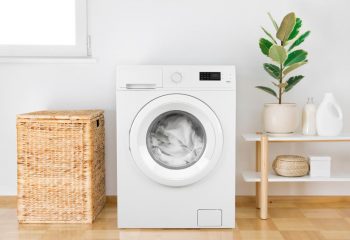
Refrigerant is an interesting chemical substance that circulates your air conditioning system. It starts in a gaseous state. It then gets pumped by the compressor into the condenser.
Here, it turns into a liquid which then absorbs and releases heat to turn into a gas again – and the cycle repeats itself.
Through the years, manufacturers have developed different kinds of refrigerants in response to natural conservation concerns.
Understanding the different kinds of refrigerants used in air conditioners might help you better understand your unit and may even prompt you to replace old ACs you might still use.
- Refrigerant is the substance that allows air conditioners to absorb heat and cool a space.
- Older versions of refrigerant are detrimental to the environment.
- Manufacturers have come up with newer, more sustainable versions of refrigerant.
- Today, most models on the market either use Puron or R32.
- Certain types of refrigerants like CFCs and Freon have been phased out due to their effects on nature.
Refrigerant might seem cool (pun intended) but it can also damage the environment. That’s why scientists and manufacturers are working hard to discover eco-friendly versions of refrigerants that reduce the potentially harmful effects on the atmosphere and the ecosystem.
Different Kinds of AC Refrigerant
1. Chlorofluorocarbons (CFC)
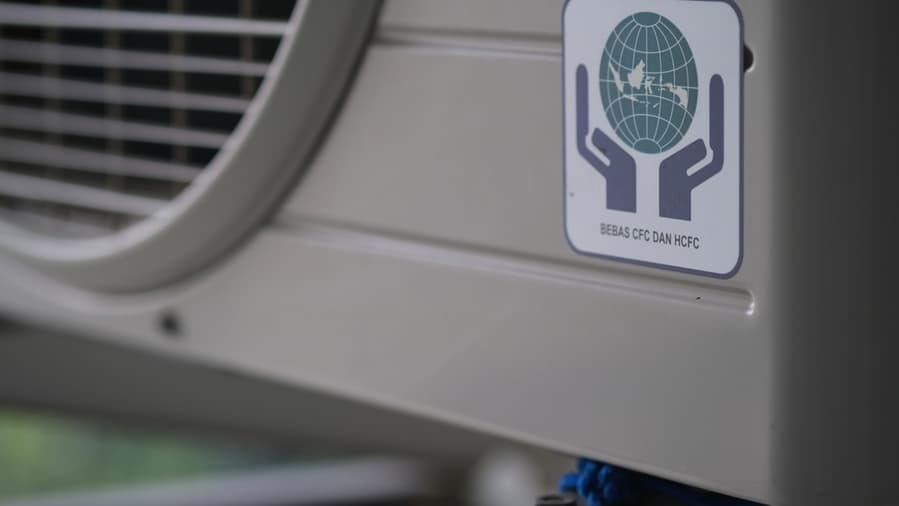
There are lots of different kinds of chlorofluorocarbons, like R12. These early refrigerants worked well during their time but had detrimental effects on the ozone layer.
Even worse, these chemicals contributed heavily to the greenhouse gas effect, prompting developers to develop more sustainable alternatives.
No air conditioning units on the market still use chlorofluorocarbons since they were phased out in 1994. However, it is possible for some households and even commercial establishments and offices to still use air conditioners that operate with CFCs like R12.
2. Freon (R22)
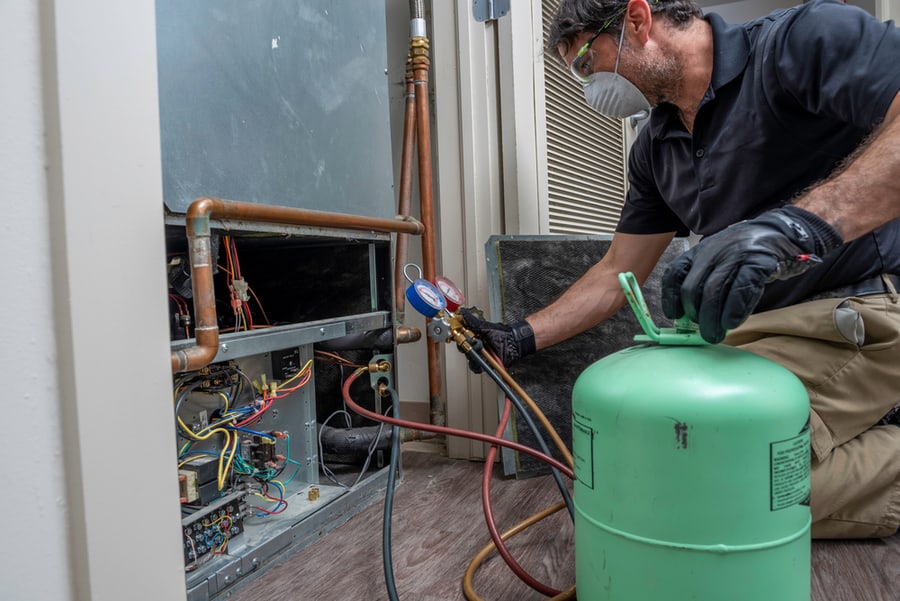
This is a type of refrigerant that you’re familiar with. R22 (commonly called Freon) has been the popular and dominant refrigerant used in air conditioning units for decades since CFCs were phased out.
While its effects on the environment are far less pronounced, R22 has still been found to cause significant damage to the atmosphere.
In 2010, the US passed the Clean Air Act, forcing manufacturers to develop newer alternatives to Freon.
According to reports, Freon has been phased out as of 2020. But since that’s a relatively recent time, many existing air conditioners still use refrigerant.
That said, your air conditioning units at home may operate by way of Freon.
3. Puron (R410A)

This is the current refrigerant used in air conditioners. Puron provides a safer cooling performance than its predecessors without any chlorine in the solution.
According to experts, Puron also produces better quality air and allows air conditioning systems to run more efficiently, thus reducing energy consumption.
But although it’s already a remarkable improvement versus the past refrigerants used in air conditioners, Puron remains prone to replacement.
That’s because the substance still touts a relatively high Global Warming Potential (GWP) despite its low Ozone Depletion Potential (ODP.)
Based on studies, Puron may even have a higher GWP than its predecessor, Freon. The only reason it still wins as the more viable refrigerant is that it has an ODP rating of zero, versus Freon which rates 0.055.
4. R32

Some people categorize R32 as a Puron, but it’s a new-generation refrigerant. According to reports, R32 touts a GWP that’s roughly just a third of that of Puron. That’s on top of its ODP, which stands at zero.
As of 2018, it’s estimated that nearly half of all window-type air conditioners sold in the United States use R32. The first company to adopt the change was Daikin, which started selling R32 air conditioners in 2016.
Today, more and more brands are slowly changing to R32 refrigerant, but the transition is gradual. So it’s still possible to buy units that use Puron.
With time, however, it’s expected that R32 will dominate the market and that Puron will be slowly phased out for its detrimental environmental effects.
Takeaway
What kind of refrigerant does your air conditioning system use? When choosing an AC, there’s much more to consider than energy consumption and cooling performance.
Taking refrigerant into account can help you narrow down your options and find an air conditioner that can provide efficient cooling comfort minus the potentially dangerous environmental effects.
Frequently Asked Questions
How Can You Tell What Refrigerant an Air Conditioner Uses?
The law requires that air conditioner manufacturers indicate the kind of refrigerant their system uses. That said, you can usually find the information on the compressor unit outside the air conditioner.
The information sticker might be on the side of the unit’s front panel for window-type units.
Can You Replace an Air Conditioner’s Refrigerant?
While it’s always encouraging to see manufacturers working towards more sustainable technology, there is a downside to these refrigerant updates.
The major disadvantage is that air conditioner brands have yet to devise a way to change the refrigerant inside your existing air conditioner.
You must entirely replace your older AC units to decrease your carbon footprint and reduce your home’s environmental impact.

